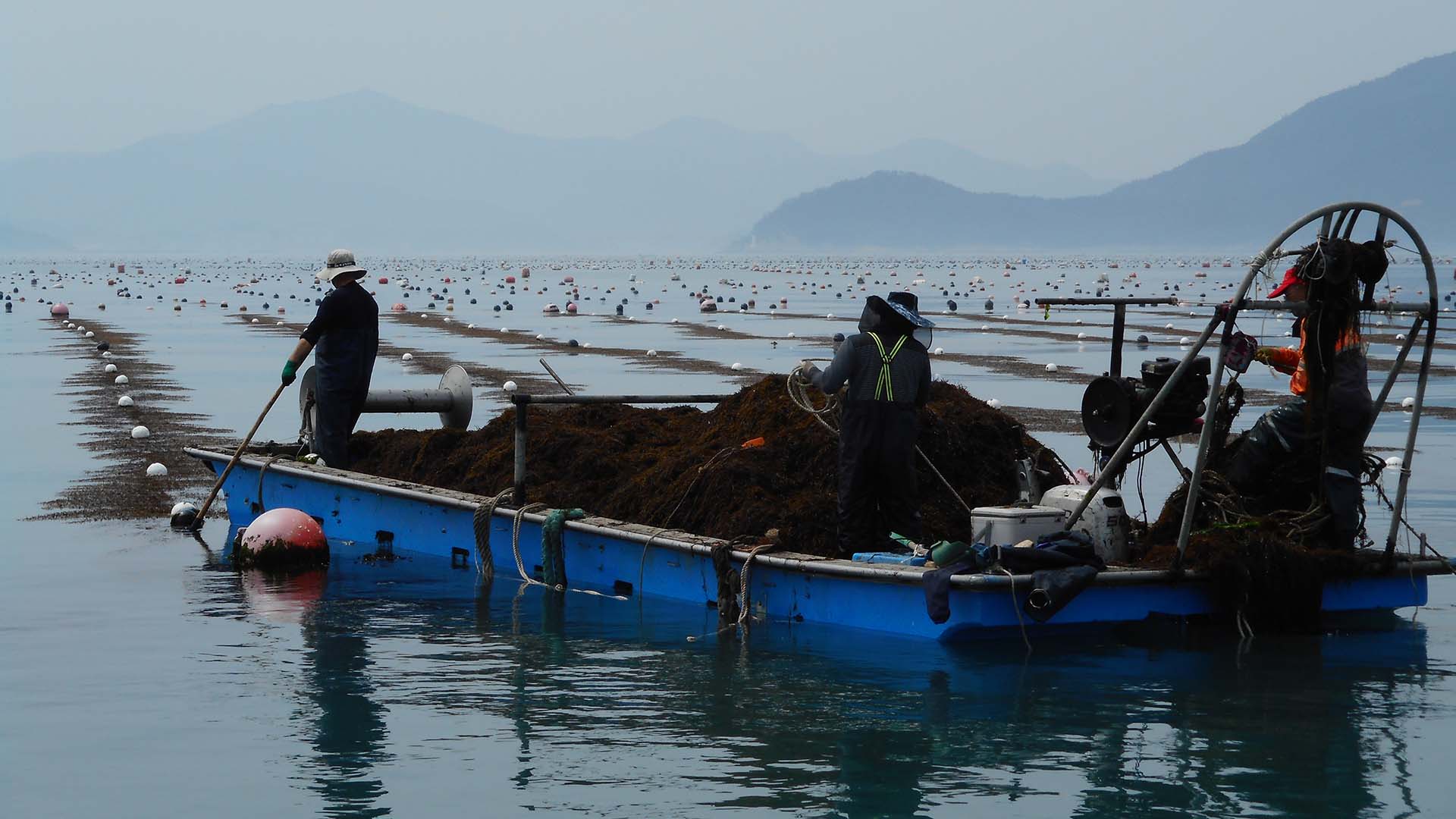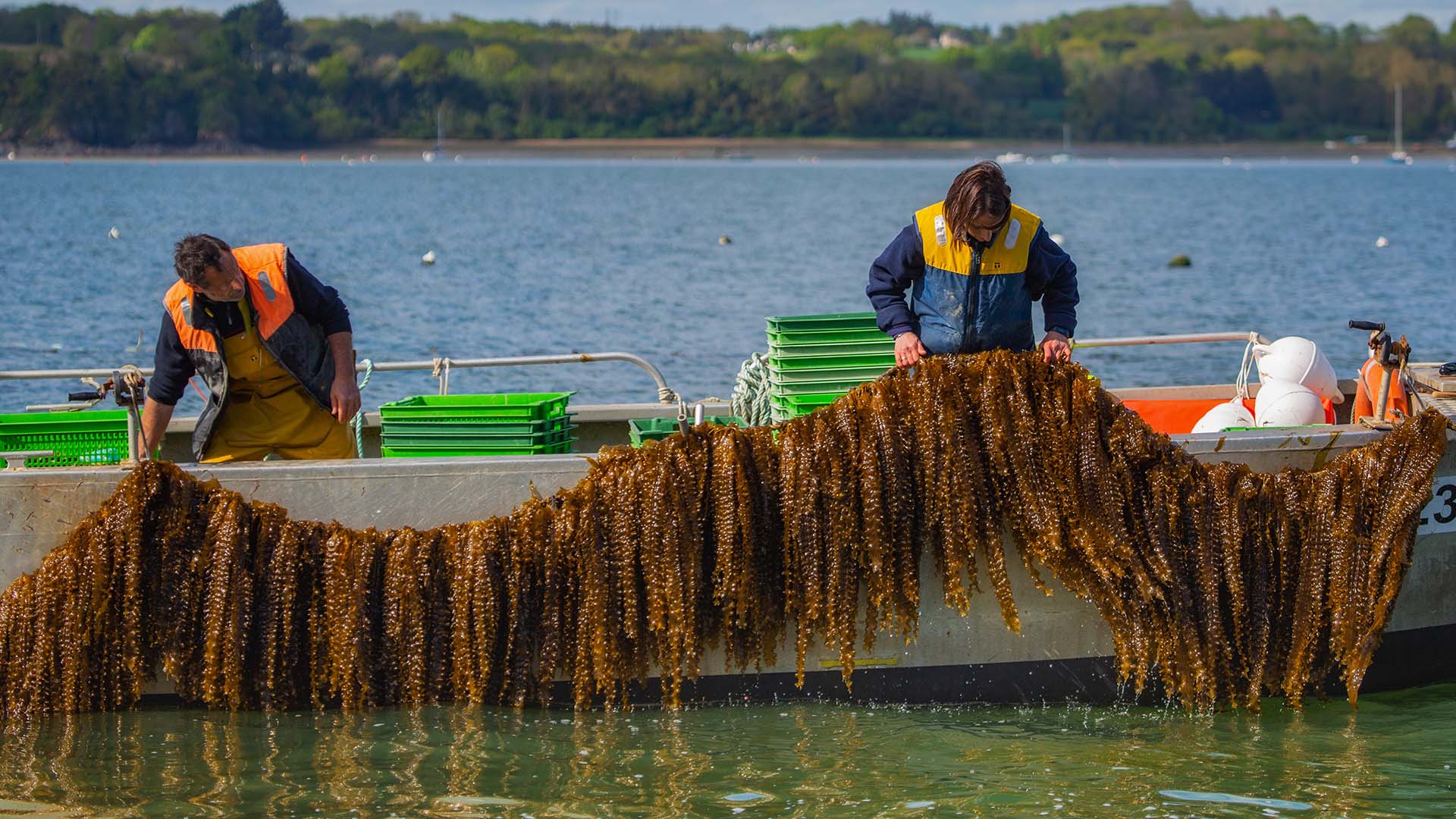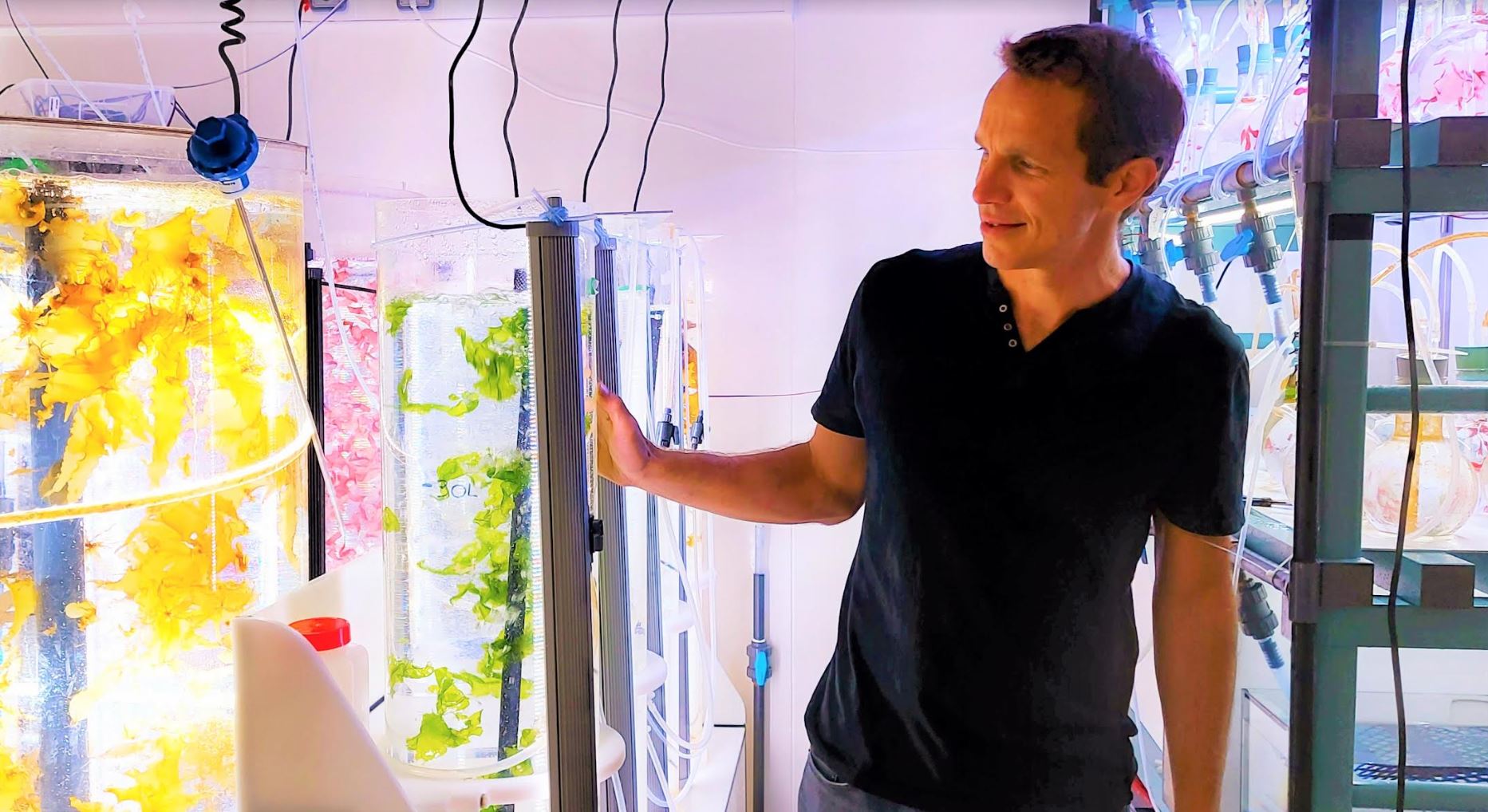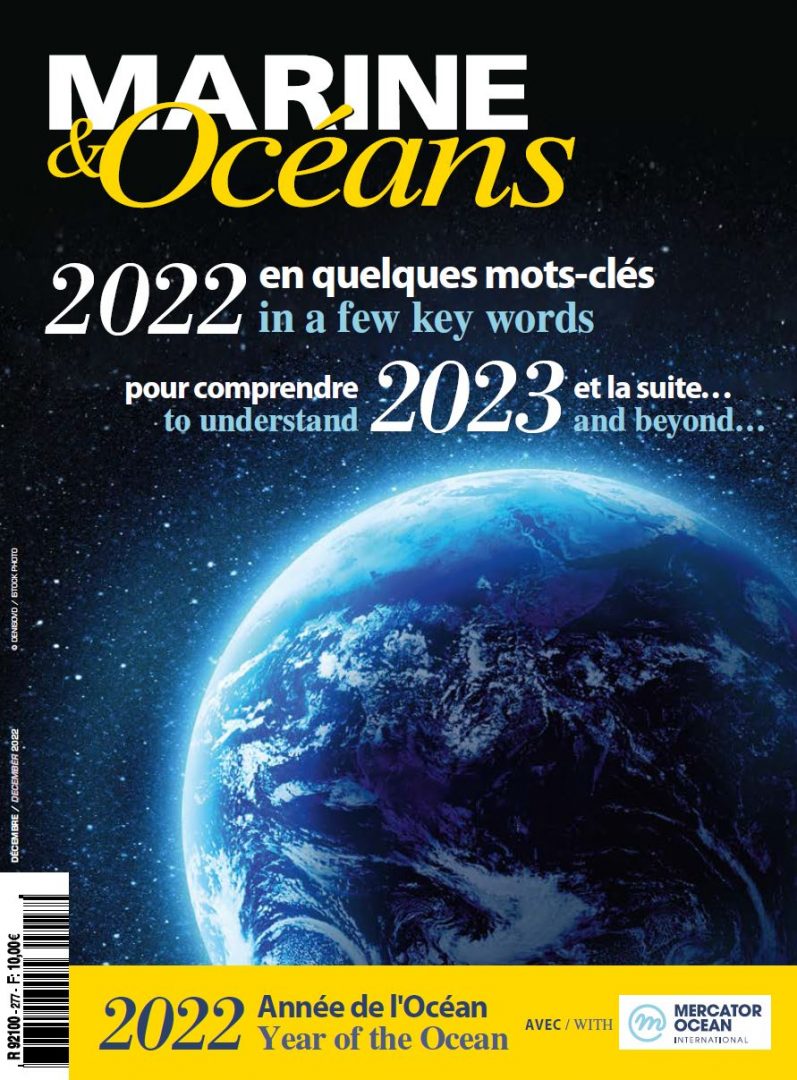Mostly cultivated in Asia, Seaweed may well be our greatest untapped resource while they could feed populations, restore biodiversity, provide medical solutions and contribute to mitigate Climate Changes Some details here.
By Vincent Doumeizel, Senior Advisor at UN Global Compact
* * *
12,000 years ago, human beings moved from prehistory to modern history when they stopped being hunter-gatherers and became farmers growing crops on land. But we never did this with oceans and remain in the Stone Age. This led to the destruction of entire ecosystems. Yet we are the first generation to realize that our food systems cannot produce enough on land to feed 10 billion people in 2050. Today, 800 million people are going to bed hungry in the world while one child in every four is stunted. Meanwhile, the oceans cover more than two-thirds of our planet and currently contribute to less than 2% of our food in calory supply. If we want to enter a civilization that restores the ocean ecosystems instead of destroying them, seaweed is a very good place to start. Macroalgae is the first trophic level, it feeds phytoplankton and the first part of the food chain. Seaweed can really help to restore biodiversity in oceans. The seaweed tides faced in Brittany, Caribbean or elsewhere have given tainted these organisms with a bad reputation. Seaweed are, however, only the symptom of the problem. This actual problem is the extreme soil pollution and the intensive agriculture run offs always ending up in the oceans. These seaweed tides only act like an immune for the ocean. They absorb the excess of nutriments in order to protect life below water. Moreover, these seaweed tides only related to wild algae. The great challenge of our generation should then be to domesticate Seaweed. There are 12,000 very different types of seaweed and, so far, we only know how to grow ten to twenty of them. Mostly from Asia! Seaweed were the first complex living organisms on this planet. Half a billion years ago, green seaweed moved on land and created all the plants we see around us. Macroalgae thus represents a solution support addressing our most pressing ecological and demographic challenges. We will have to learn from the past experience in the ocean to build a sustainable future on land. As such, seaweed is an unlimited source of innovation.

Very diverse applications
First, Seaweed can provide sustainable and nutritious food. seaweed contain a lot of protein (sometimes more than soy) and nutrients essential to human health, such as iodine, iron, zinc and Omega 3. They are the only “vegetable” containing vitamin B12 which is known to be so important for our brain! Already, Chefs around the world are beginning to explore these new gustative territories and educate people about the multiple benefits of seaweed and their incredible diversity of flavors. In Japan, seaweed makes up to 10% of the food and seems to contribute to the exceptionally long-life expectancy and to the low rate of cancer, diabetes, obesity and cardiovascular diseases.
But seaweed can also feed our livestock by reducing the use of antibiotics and greatly decreasing methane emissions from ruminants. Studies show that adding a few grams of a red seaweed could cut by 90% methane emissions from ruminants. This would represent a climate impact equivalent to stopping all the cars on earth.
Seaweed can still provide natural bio stimulants for plants and sustainably support agriculture by increasing crop resistance in order to replace some fertilizers. China already uses seaweed fields to absorb nutrients from land pollution and clean its bays. They partly valorize these macroalgae using them on land to boost plant growth, thus creating a kind of circular ad regenerative agriculture finally reconnecting land with the oceans.
Some others consider seaweed extracts as an alternative to plastic by using some of their natural biodegradable and sometimes edible polymers. Already more than 30 start-ups around the world are working on ending plastic pollution by using seaweed instead. Some are already conducting conclusive pilots with major food brands. But plastic is not the only unsustainable resource that could be replaced by macroalgae. Seaweed-based fibers could also replace cotton or other synthetic materials. Let us remember that cotton represents 2% of cultivated land and requires 25% of the pesticides used on our planet. Moreover, as demonstrated by WWF, the production of a cotton T-shirt requires 4,000 liters of water. Seaweed fibers present a much more sustainable solution. From a medical innovation point of view, seaweed has already demonstrated antiviral, antibacterial, antifungal, anti-inflammatory and analgesic properties while acting as prebiotics for our microbiota. They constitute potential breakthrough innovations in our medicine.

Carbon Sink
Moreover, as highlighted during COP26 in Glasgow, macroalgae can also represent a natural solution itigate globmal warming. Indeed, not only seaweed contribute to decarbonize our economy by providing resources to replace high-carbon emission products as mentioned above, but also these marine forests, which sometimes grow 40 cm per day to reach 60 meters high, absorb much more GHG than any tropical forest on land. Moreover, unlike terrestrial plants where the carbon will be quickly released by bacterial degradation at the end of the cycle, part of the carbon in algae is lost during their growth phase and ends up in abyssal sediments where, for there are no bacteria to degrade them. There, it can be sequestered for millions of years. Seaweed hence represents a massive and natural carbon sink. Alas, wild kelp forests are increasingly vulnerable to disruption in ocean ecosystems caused by human activity. We already lost 80% of the forests off California, causing the extinction of 750 species. We are all concerned about the fires and deforestation in the Amazon, but who cares about the loss of these marine forests? There is a fire under the ocean and no one cares. We must – urgently – protect, replant and cultivate these marine plants, otherwise they will disappear. And we will as well !
Finally, seaweed also generates new sources of jobs and revenues to coastal populations where fishing resources are inexorably decreasing. Seaweed cultivation requires very little investment when the drying process is done naturally on shore. Just seed a few strings, put them in the water and let the algae grow. Another interesting aspect of the seaweed industry is the high number of women working in it. In East Africa, 80% of jobs in the seaweed sector are held by women. As such, seaweed furthers women’s empowerment and gender parity in emerging countries.

The Seaweed Manifesto
Taking stock, potential applications of macroalgae seem unlimited while our experience in using these plants seems very limited… Still, large-scale seaweed cultivation is not a concept. Today, more than 35 million tons of seaweed are produced worldwide. 98% of them come from Asia where they are cultivated. This sector is generating 15 billion dollars of revenues growing at 10% a year and employing more than 8 million people. France has the second largest maritime territory in the world, an internationally recognized center of expertise in Brittany and an exceptional algal biodiversity, still France represents only 0.1% of global seaweed production. And still 99% of this very limited production comes from wild seaweed collection which may sometimes endangers species. This resource is so far only cultivated properly in Asia while it does not require land, pesticides or fresh water. Seaweed needs only needs salt water and sun to grow. Still, we will have to learn from our mistakes on land and design an ocean permaculture that does not need monoculture, GMOs and industrial farming. Because properly used, seaweed is an almost free and restorative resource for our planet.
In 2020 was developed by the United Nations Global Compact and many other actors, the Seaweed Manifeso(1). This document highlighted the potentials and underlined necessary actions for the development of this sector. Outside Asia, the lack of cooperation between small aquaculture players, industrial or academic, spread all around the world has been identified as a major hurdle to scale up this nascent supply chain. Thus, in order to strengthen collaboration, the Safe Seaweed Coalition(2) was launched last year. Funded by the Lloyd’s Register Foundation, it is the first global coalition of seaweed stakeholders. Already bringing together almost 700 members, it should contribute to accelerate research and attract investors. Supported by government and institutions, the coalition also supports the emergence of international safety regulations and pilots them in the ocean.
But here, we are all drivers of the change. It is time for each of us to act in our daily choices and support the seaweed sector. We are all connected to the same food system in the end. Through our food choices, we can shape the world of tomorrow and direct it to a resource that is good for our health and good for the planet! We could thus be remembered the first generation on earth able to feed its entire global population while restoring ocean biodiversity and mitigating climate change. We are going through major crises at the moment so we need new solutions. The world is craving good news and reasons for hope and optimism. The seaweed potential is an excellent one !

Vincent Doumeizel is also Director for the Food Programme at Lloyd’s Register Foundation. Since 2021, he co-leads with CNRS the Safe Seaweed Coalition, first ever global platform gathering seaweed stakeholders. In January 2022, he released a reference book on seaweed La Révolution des Algues (The Seaweed Revolution / Editions Equateurs, still to be translated in English).


